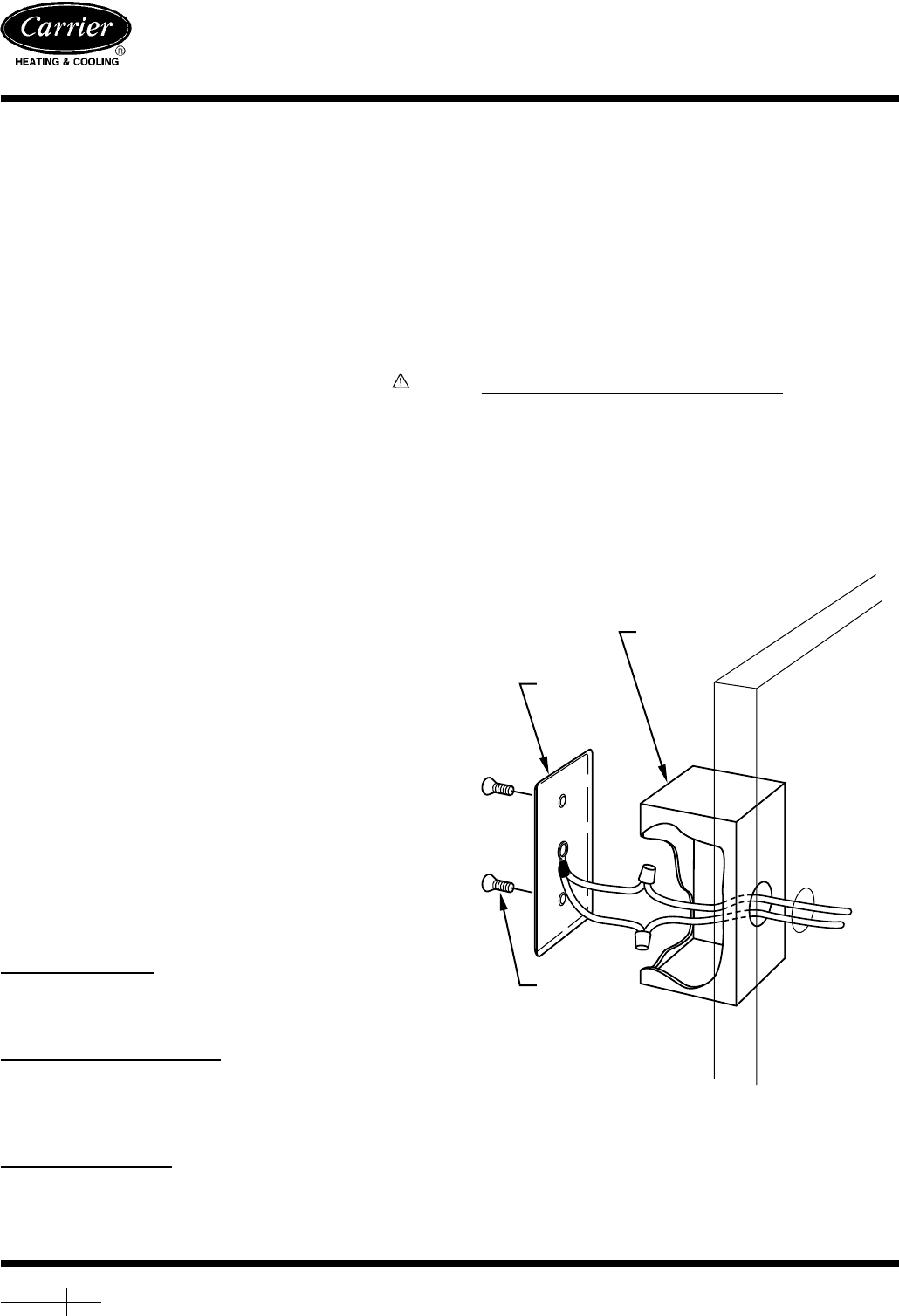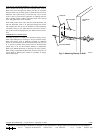
TSTATCCSEN01
Outdoor Temperature Sensor
Installation Instructions
NOTE: Read the entire instruction manual before starting the
installation.
SAFETY CONSIDERATIONS
Read and follow manufacturer instructions carefully. Follow all
local electrical codes during installation. All wiring must conform
to local and national electrical codes. Improper wiring or installa-
tion may damage thermostat sensor.
Recognize safety information. This is the safety-alert symbol
.
When you see this symbol on the equipment and in the instruction
manual, be alert to the potential for personal injury.
Understand the signal words DANGER, WARNING, and CAU-
TION. These words are used with the safety-alert symbol. DAN-
GER identifies the most serious hazards which will result in severe
personal injury or death. WARNING signifies a hazard which
could result in personal injury or death. CAUTION is used to
identify unsafe practices which would result in minor personal
injury or product and property damage.
INTRODUCTION
The remote temperature sensor is an accessory for all Carrier
thermostats, except the non-programmable A/C versions. It allows
the temperature at a remote location to be displayed on the
thermostat.
MOUNTING CONSIDERATIONS
Choose a location for the outdoor sensor after considering the
following:
1) A wiring route must be planned between thermostat and
location of outdoor sensor, prior to installation.
2) A sensor located in direct sunlight will not read properly while
the sun is shining on it.
3) A high location under an eave is ideal because it is protected
from sun, weather, and people.
4) The sensor can be mounted directly to a wall using provided
screws and standoffs or can be used as a cover for a standard
electric outlet box (not supplied).
WIRING SELECTION:
A pair of conductors must be selected to run between mounted
sensor and thermostat. Conductors must be rated NEC Class 1.
Thermostat and common bell wire have this rating.
MOUNTING TO OUTLET BOX:
A standard electrical box (not included) may be used with the
sensor plate as its cover. This provides room inside box for wire
nut connection between sensor wires and wiring run to the
thermostat.
USING SENSOR PLATE:
Attaching the plate directly to the outside wall simplifies mounting
and requires less space, but the wire nut transitions to the
thermostat wiring now need to be made within the wall. This may
be difficult in some installations.
PERFORMING THE INSTALLATION
Once the mounting location has been selected, route the intercon-
necting wiring through the building between thermostat and
outdoor sensor. The exit point from inside to outside will be the
location of the outdoor sensor. The location of the wire nuts will
be either inside or outside of wall depending on whether or not a
box is used. Allow sufficient wire length for some excess on each
end.
IF AN OUTLET BOX IS USED: (See Fig. 1.)
Drill a suitable hole in the building wall at selected sensor location.
Route interconnecting wire through building wall. Remove rear
knockout from electric box, route wire through box, and attach box
to wall with supplied wood screws.
Cut and strip wires to a reasonable length and connect with
supplied wire nuts. Polarity is unimportant. Seal wires where they
exit building with a suitable exterior caulk. Fasten cover to box
with supplied sheet metal screws.
SENSOR
FIELD-SUPPLIED
OUTLET BOX
EXTERIOR
WALL
METAL
SCREWS
A94409
Fig. 1—Mounting to Outlet Box
Manufacturer reserves the right to discontinue, or change at any time, specifications or designs without notice and without incurring obligations.
Book 1 4
Tab misc. misc.
PC 101 Catalog No. 92-33TS-TA13C Printed in U.S.A. Form TSTAT-3SI Pg 1 12/15/94 Replaces: New




